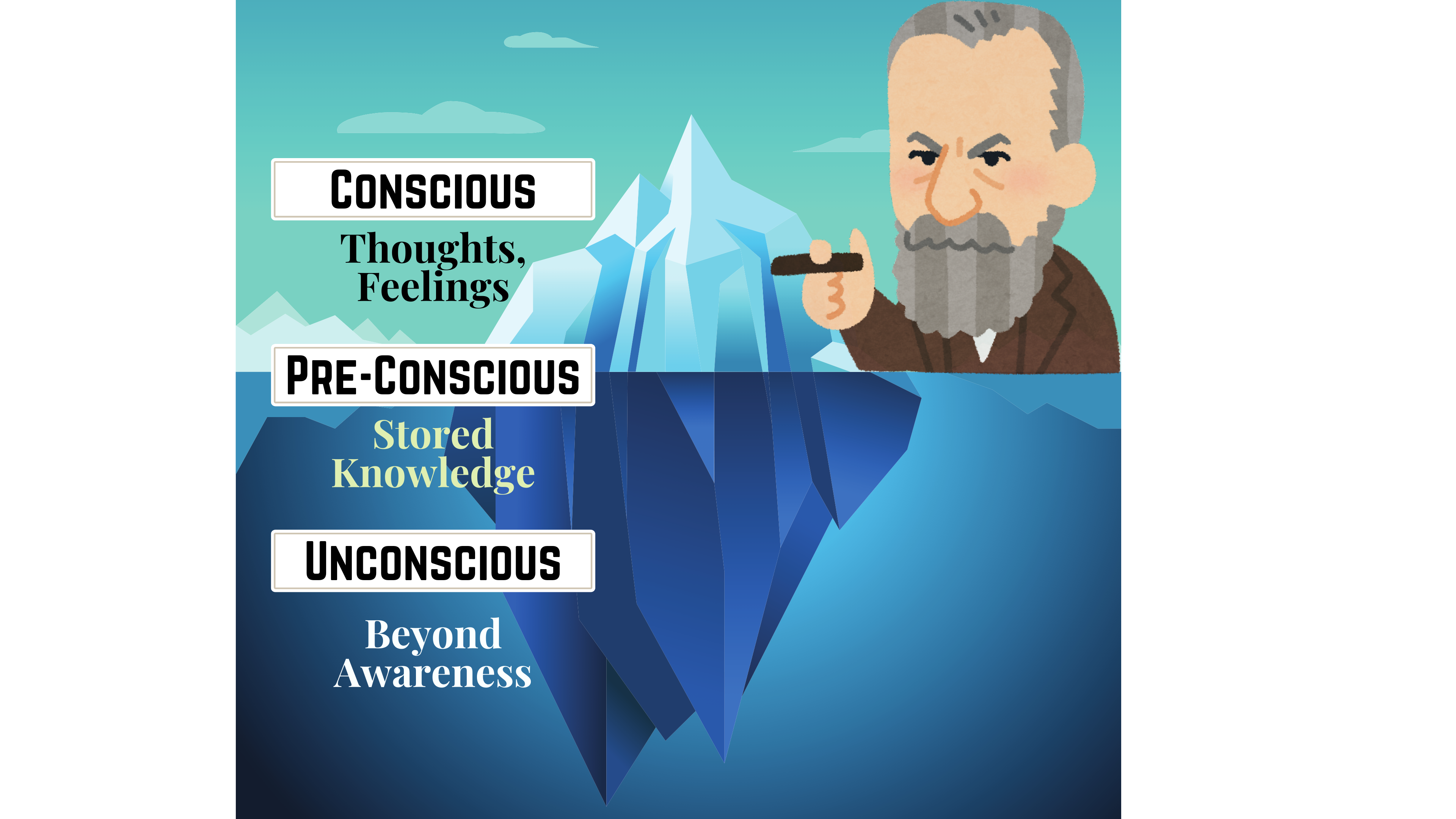In the wide spectrum of sexuality, there exists a phenomenon that even eludes the awareness of one’s mind – latent homosexuality. Hidden behind the facade of heterosexuality, latent homosexuality shrouds itself away from society and, many a time, from the individual afflicted too. These suppressed desires often eat away at the person, impacting the individual at a deep level.
But what is latent homosexuality? Is it simply suppressed desires, or is there something deeper at play? To know the answers to your questions, read on and find out what is latent homosexuality, how it impacts an individual, and how it can manifest.
Table of Contents
What is Latent Homosexuality?
As defined by the American Psychological Association, latent homosexuality refers to same-sex attraction that is not expressed and unrecognised. It exists at an unconscious level and can often be repressed and denied by the individual. The term latent homosexuality is the combination of 2 terms- latent and homosexuality. In this case, latent has come to mean dormant or in a developed but inactive state and homosexuality is sexual attraction to the same sex.
Essentially, latent homosexuality is an individual’s tendency to be homosexual, which (a) either exists but is not yet discovered or (b) is being unconsciously denied by the individual. These homosexual tendencies exist beneath the surface of conscious awareness, often concealed by societal norms, personal fears, or internalised beliefs about sexuality.
Freud first used the term as part of his psychoanalytical theory after having observed the sexual orientation of individuals as part of his clinical experience. Freud stated that these latent homosexual urges existed at a level beyond the consciousness, in the unconscious. To better understand what is latent homosexuality, we must first understand the unconscious.
Exploring the Unconscious
According to Freud, the human mind has three stages of consciousness – the conscious, the preconscious, and the unconscious. Freud’s psychoanalytic theory was his most significant contribution to the field of psychology and remains popular to this day. The graphic below showcases an easy way to understand his three stages of consciousness.

As the iceberg illustrates, the conscious level of the mind is what we are actively aware of. This includes our thoughts, feelings, motives, and drives. Below the conscious lies the preconscious. According to Freud, the preconscious level is sort of a waiting room; information stays here until it is actively needed, at which point it is pulled into the conscious level of the mind and utilised.
The deepest of all lies the unconscious level of the mind. Freud theorised that this level of the brain contains all deep-seated impulses, desires and fears, as well as all repressed trauma or experiences. He believed that the unconscious level of the brain remained inaccessible to individuals and that the unconscious influenced our behaviour without comprehension. Freud believed that the unconscious deeply influenced an individual’s actions despite its contents being unavailable at the conscious level.
It is at this level that Freud believed that latent homosexuality lay. The Freudian theory believes that individuals who display signs of latent homosexuality have an internal conflict within themselves. While the conscious and preconscious levels of their mind ask them to adhere to hetero-normative beliefs, at the unconscious level, they have homosexual urges and feelings which are not allowed to rise to higher levels of consciousness.
This particular sexual orientation may be a result of immature sexual development or perhaps trauma during formative years. Additionally, if an individual faces negative experiences about adolescent homosexuality, they may unconsciously suppress their own homosexual beliefs to fit in with society better.
How Can Latent Homosexuality Manifest?
Now that we have understood what is latent homosexuality, we must know how it can manifest in individuals. Those with this particular sexual orientation may experience several difficulties as they constantly face inner turmoil regarding their identities, even if it is at an unconscious level. Their unconscious homosexuality clashes with their conscious desires to be heterosexual, which often leads to a whole host of conflicts, which may manifest themselves internally or externally. Let us take a look at five potential indicators of latent homosexuality.
5 Signs to Look Out For
Unconscious Attraction
Those with latent homosexuality possess an unconscious level of attraction towards the same sex. While this may not be apparent to the individual itself, and they may not make conscious advances towards members of their sex, the unconscious level of the mind tends to ‘leak out‘. These homosexual impulses may range from merely wanting to spend an increased amount of time with those of the same sex to full-blown fantasies and other sexual arousal.
Difficulty Forming or Maintaining Heterosexual Relations
Naturally, those with an unconscious level of homosexual attraction also have a subdued interest in pursuing heterosexual relationships. Latent homosexuals may avoid heterosexual relationships altogether or be extremely conflicted when they are part of one. Furthermore, this can also manifest itself as individuals resorting to fake excuses about not wanting to engage in heterosexual relations, as the latent urges to pursue a homosexual relationship may be present below their levels of personal awareness.
Self Hostility
Often, latent homosexual urges can result in self-hostility among individuals who harbour a sense of internalised homophobia. This can be caused by prejudice and negative attitudes towards homosexual behaviour, which is a result of growing up in environments where these feelings are shunned. This internalised homophobia causes them to view their inner desires as abnormal and unwanted by society, thus leading to a fear of homosexuality.
Homophobia
Research suggests that there exists a connection between homophobia and suppressed homosexual urges. Studies have found that being a closeted or hidden homosexual is a factor in homophobia. This negative effect towards gay individuals is a direct result of internalised hatred, fear, and shame, which can threaten their state of being and incite panic in the individual, leading them to commit homophobic acts.
Mental Health Issues
Additionally, as a result of the constant inner battle between their states of being, individuals with latent homosexual urges are likely to face mental health issues such as anxiety, depression, and loneliness. Constantly suppressing or denying their true desires can contribute to psychological distress, and the internalised conflict can erode self-confidence and self-worth.
YOU MIGHT BE INTERESTED IN: The Paradox of Homosexuality in India with HRH Manvendra Singh Gohil
Conclusion
In conclusion, latent homosexuality refers to unconscious same-sex attraction that remains unrecognised or suppressed within an individual. Understanding what is latent homosexuality is crucial to truly understanding the vast sexual spectrum that individuals may fall on as a phenomenon highlights the complexity of human sexuality, where internal conflicts between the unconscious and conscious can deeply impact a person’s well-being. Latent homosexuality may manifest through subtle signs like unconscious attraction or difficulty in forming heterosexual relationships, often accompanied by internalised homophobia and mental health challenges.
FAQs
What is the Legal Definition of Homosexuality?
The legal definition of homosexuality typically refers to same-sex sexual behaviour or attraction between individuals. Laws related to homosexuality vary widely across different countries and regions, ranging from decriminalisation to criminalisation or various forms of legal recognition and protection for LGBTQ+ individuals.
When was Homosexuality Normal?
The normalisation of homosexuality has evolved over time. Historical attitudes towards same-sex relationships have often been negative or stigmatising and even bordered on categorising homosexuality as a mental disorder. However, broader acceptance and legal recognition of LGBTQ+ rights has gained traction in the latter half of the 20th century and continues to progress in many parts of the world today.
What is Overt Homosexuality?
Overt homosexuality refers to the open expression or display of same-sex attraction or homosexual behaviour. Overt sexuality stands opposite to latent homosexuality; latent homosexuality is the suppressed or unconscious feelings of same-sex sexual attraction that a person may have.










Freud’s theories have caused a lot of problems for gays, especially his theory that the mother can cause her son to be gay and that there are “latent homosexuals”. The idea that there is latent homosexuality was popular in the 1950s but now it’s more common to talk about bisexuality and to believe that homosexual feelings aren’t so deep rooted that the person doesn’t even know he/she has them. Nowadays people believe that they must feel something that they are either suppressing or acting on, but they know they are feeling it. Try watching the movie “Cat on a Hot Tin Roof” (typical 50s play by Tennessee Williams) where Paul Newman supposedly doesn’t know he’s gay but he doesn’t want sex from his wife (Elizabeth Taylor) and nobody can understand it. It’s a confusing movie to modern people because these non-expressed feelings are unbelievable.